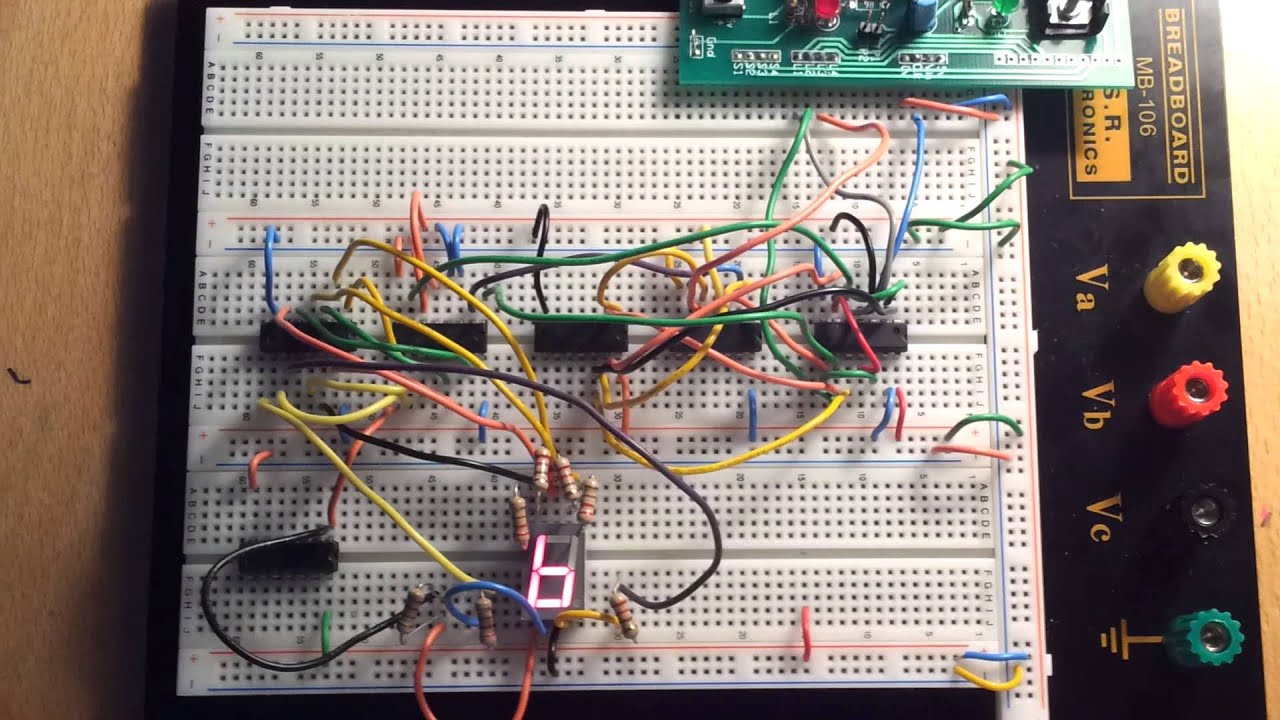Asynchronous Counter Market Overview
Asynchronous counters, also known as ripple counters, are essential components in digital electronics for counting and sequencing operations. This market overview provides insights into the technology, customer analysis, key metrics, historical developments, benefits, and dynamics of the asynchronous counter market.
Introduction
Asynchronous counters operate without a common clock signal, relying on the propagation delay of signals through sequential elements. They find applications in various digital systems where precise timing is not a strict requirement or where simplicity and cost-effectiveness are prioritized over synchronization.
Technology Analysis
The technology behind asynchronous counters includes:
- Flip-Flops: Asynchronous counters utilize flip-flops to store and propagate binary information. Each flip-flop in the counter represents a bit of the count sequence.
- Propagation Delay: The propagation delay of signals through flip-flops determines the timing and sequencing of the counter. As each flip-flop’s output triggers the next flip-flop, a ripple effect propagates through the counter.
- Reset Mechanism: Asynchronous counters may incorporate reset mechanisms to initialize the count sequence or to enable specific counting configurations.
Customer Analysis
Customers for asynchronous counters span various industries and applications, including:
- Education: Educational institutions use asynchronous counters for teaching digital electronics principles and basic counting operations.
- Consumer Electronics: Simple digital devices, such as digital timers, counters, and basic control circuits in consumer electronics, may utilize asynchronous counters due to their cost-effectiveness.
- Industrial Automation: In industrial automation systems, asynchronous counters find applications in basic counting and sequencing tasks where precise timing is not critical.
- Prototyping and Development: Engineers and hobbyists use asynchronous counters in prototyping and development projects due to their simplicity and ease of implementation.
Key Metrics
Key metrics in the asynchronous counter market include:
- Unit Sales: The number of asynchronous counter units sold globally over a specified period.
- Revenue: Total revenue generated by asynchronous counter sales, including both hardware and associated services.
- Market Share: The percentage of total market sales captured by each asynchronous counter manufacturer or vendor.
- Growth Rate: Annual growth rate of the asynchronous counter market, indicating its expansion or contraction over time.
Historical Developments
The evolution of asynchronous counters has been marked by several significant developments:
- Early Counting Circuits: Asynchronous counters trace their roots back to early digital circuits designed for basic counting operations.
- Integration with Integrated Circuits (ICs): The integration of asynchronous counters into ICs facilitated their widespread adoption and contributed to cost reduction and miniaturization.
- Improvements in Design and Performance: Advances in semiconductor technology have led to improvements in the speed, power consumption, and reliability of asynchronous counters.
Benefits
Asynchronous counters offer several benefits to users:
- Simplicity: Asynchronous counters are relatively simple in design and implementation, making them suitable for applications where complexity is not a requirement.
- Cost-Effectiveness: Due to their simplicity and straightforward operation, asynchronous counters are often more cost-effective than synchronous counterparts.
- Flexibility: Asynchronous counters can be easily configured for various counting sequences and applications, providing flexibility to designers and engineers.
Receive the FREE Sample Report of Asynchronous Counter Market Research Insights @ https://stringentdatalytics.com/sample-request/asynchronous-counter-market/7371/
Market Segmentations:
Market Segmentations:
Global Asynchronous Counter Market: By Company
• Intel
• Broadcom Inc
• Texas Instruments
• STMicroelectronics
• NXP Semiconductors
• Microchip Technology Inc.
• Renesas Electronics
• onsemi
• Toshiba
• Wingtech(Nexperia)
Global Asynchronous Counter Market: By Type
• Asynchronous Up Counter
• Asynchronous Down Counter
Global Asynchronous Counter Market: By Application
• Consumer Electronics
• Industrial
• Others
Regional Analysis of Global Asynchronous Counter Market
All the regional segmentation has been studied based on recent and future trends, and the market is forecasted throughout the prediction period. The countries covered in the regional analysis of the Global Asynchronous Counter market report are U.S., Canada, and Mexico in North America, Germany, France, U.K., Russia, Italy, Spain, Turkey, Netherlands, Switzerland, Belgium, and Rest of Europe in Europe, Singapore, Malaysia, Australia, Thailand, Indonesia, Philippines, China, Japan, India, South Korea, Rest of Asia-Pacific (APAC) in the Asia-Pacific (APAC), Saudi Arabia, U.A.E, South Africa, Egypt, Israel, Rest of Middle East and Africa (MEA) as a part of Middle East and Africa (MEA), and Argentina, Brazil, and Rest of South America as part of South America.
Click to Purchase Asynchronous Counter Market Research Report @ https://stringentdatalytics.com/purchase/asynchronous-counter-market/7371/
Key Dynamics
The asynchronous counter market is influenced by several key dynamics:
- Technology Advancements: Despite their simplicity, ongoing advancements in semiconductor technology continue to improve the performance and efficiency of asynchronous counters.
- Market Segmentation: Asynchronous counters cater to specific niche markets and applications where synchronization is not critical, leading to segmentation within the counter market.
- Customer Preferences: Customer preferences for simplicity, cost-effectiveness, and ease of use drive demand for asynchronous counters in certain applications.
Conclusion
The asynchronous counter market serves a niche but important role in digital electronics, offering simplicity, cost-effectiveness, and flexibility in counting and sequencing operations. While synchronous counters dominate in applications requiring precise timing and synchronization, asynchronous counters find their place in simpler, cost-sensitive applications where synchronization is not critical.
As technology continues to evolve and customer requirements evolve, asynchronous counters will continue to play a significant role in various industries and applications. Manufacturers and vendors in this market must understand the unique needs of their customers and adapt their products and strategies accordingly to capitalize on emerging opportunities and drive growth in the asynchronous counter market.
About Stringent Datalytics
Stringent Datalytics offers both custom and syndicated market research reports. Custom market research reports are tailored to a specific client’s needs and requirements. These reports provide unique insights into a particular industry or market segment and can help businesses make informed decisions about their strategies and operations.
Syndicated market research reports, on the other hand, are pre-existing reports that are available for purchase by multiple clients. These reports are often produced on a regular basis, such as annually or quarterly, and cover a broad range of industries and market segments. Syndicated reports provide clients with insights into industry trends, market sizes, and competitive landscapes. By offering both custom and syndicated reports, Stringent Datalytics can provide clients with a range of market research solutions that can be customized to their specific needs.
Reach US
Stringent Datalytics
+1 346 666 6655
Social Channels:




Leave a Reply